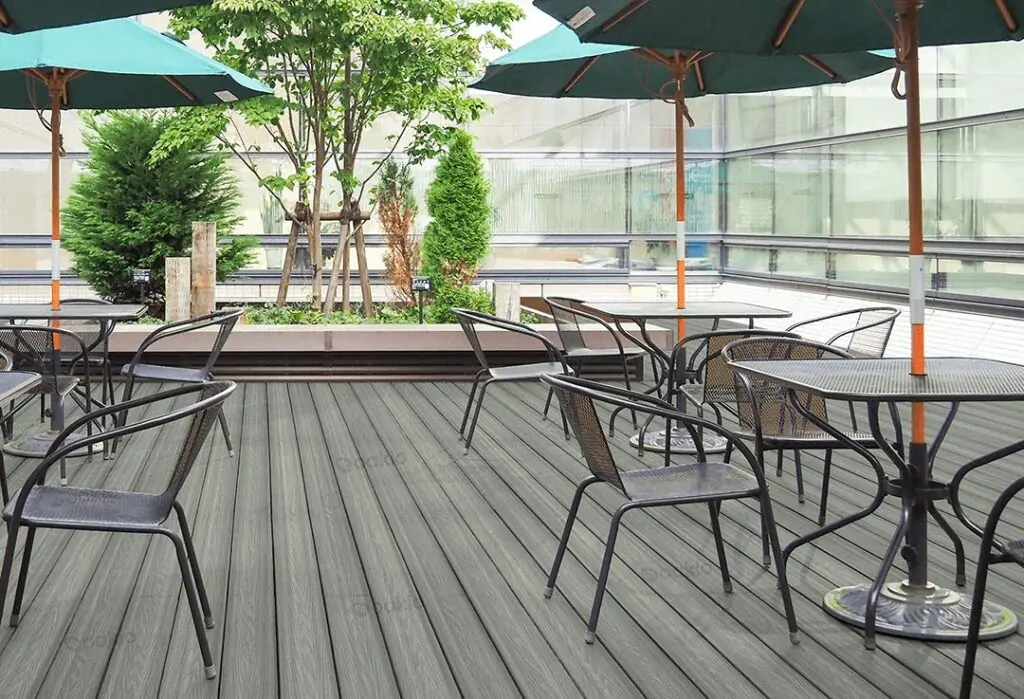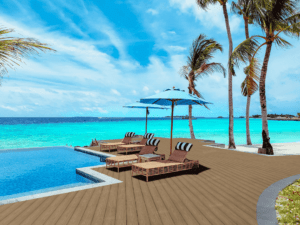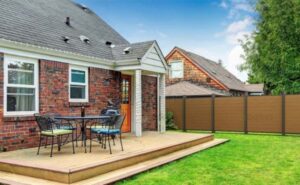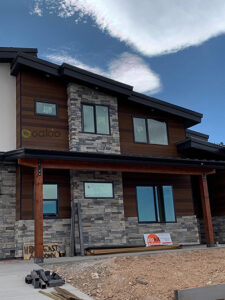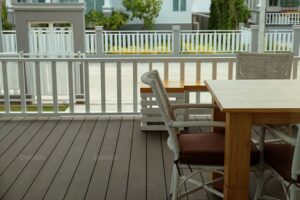Creating a Safe Outdoor Environment: Slip-Resistant Decking Options
Data has shown that outdoor slips can be life-threatening. According to the National Safety Council, tens of thousands of people die in falls at home and at work every year, and depending on the industry, it can even be the leading cause of death.
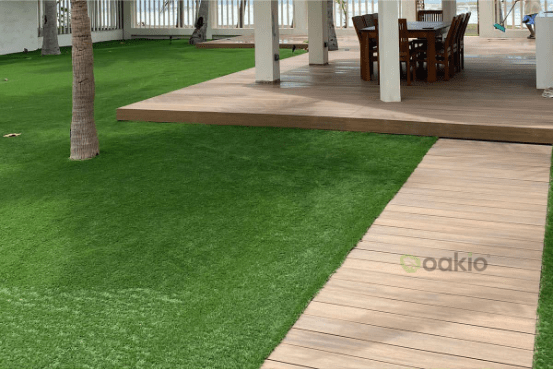
Can slips be prevented in outdoor spaces? One of today’s most effective solutions to promote outdoor safety is building the right deck. As such, choosing the right decking materials is crucial for safety and to provide a secure surface to walk on. What is there to know about a non-slip deck? Read on.
What Should You Know About Slip-Resistant Decking?
It is important to consider decking materials with slip-resistant properties. Slip-resistant decking refers to decks built with materials that provide traction underfoot, even when wet. There are also plenty of modifications to decks that can make them slip-resistant.
Oakio is a pioneer in developing and manufacturing composite decking. This type of deck is is quite popular nowadays not only for its slip-resistant capabilities, but also because they are low-maintenance, durable against UV rays and moisture, can resist warping and splintering, and are sustainable.
What Are the Common Causes of Slippery Decks?
Rainfall
Regarded as the most obvious cause of slippery decks, rainfall can create puddles of standing on deck boards. In addition, decks may stay wet for weeks if not constructed from water-resistant materials, and even quick rain showers in summer can present a risk. This can even cause a vicious cycle: the wet boards may start to warp, and warped boards are more likely to form puddles.
Debris
Furthermore, unkempt decks may also cause slipping. This is due to the build-up of debris and grime that leads to slipperiness. There are many solutions to slippery decks to avoid this. Any lapse in your maintenance routine could lead to slipper decks, leading to injuries and life-threatening incidents. Prevention is key.
Cold Weather
Frost in cold weather climates can be hazardous for your outdoor spaces mainly because of the quicker build-up of ice or snow. Moreover, if rainfall is heavy, pools of standing water solidifying can create slippery surfaces. Therefore, it is imperative to invest in a non-slip deck.
Mold and Mildew
Mold and mildew are a potential after-effect of excess moisture and improper cleaning. If mold and mildew are allowed to seep into the fibers of even composite decks, the board (or maybe even the entire deck may need replacing). Moreover, mold and mildew often make the surface of the boards incredibly slippery, and the difficult part is that no amount of cleaning can make a board affected by mold and mildew past a certain point.
Composite Decking: A Safe Alternative
Composite decks are non-slip decks primarily because they are designed and manufactured to be as slip-resistant as possible. So, even when there’s a considerable amount of moisture and water on the surface, these decks are a safer option than many others.
What Are Composite Decking Materials?
Composite decking is a material crafted usually from a combination of wood fibers, plastic, and binding agents. So, the materials used to make composite decks can vary.
For instance, Oakio’s composite decks are built with recycled wood fibers and premium polymers, offering a natural wood look; enhanced durability against UV rays, stains, and rotting; and slip-resistant properties.
What Are the Benefits of Composite Decking Over Traditional Wood Decking?
- Durability and maintenance: Compared to traditional wood decking, composite non-slip decks offer superior durability and lower maintenance.
- Lower likelihood of algae and fungus: Composite decks are well-protected from algae and fungus, which also minimizes cleaning efforts. While they are not fully immune from these, they are far less susceptible.
- Aesthetic appeal: These decks offer a variety of colors and textures that can maintain their look over time. Oakio has four various products you can choose from, all offering the beauty of hardwood without the limitations of wood products.
What Are Today’s Best Non-Slip Deck Options?
There are many non-slip deck options you can find today, such as anti-slip decking boards, anti-slip outdoor tiles, aluminum decking, and those with rubber matting and non-slip stickers. Among the leading slippery deck solutions is WPC decking.
WPC decking, or Wood-Plastic Composite, is a popular alternative to natural wood and plywood. It is made from a combination of wood, thermoplastic materials, and additives that guarantee durability and sustainability as well.
The best WPC decks are constructed with the following properties:
- Durability: They are stronger than traditional wood, thus resisting decay and degradation.
- Slip resistance: WPC is resistant to water since it doesn’t absorb it, reducing the risk of slipping.
- Flexibility: With its low modulus of elasticity, WPC decks can take several shapes and forms.
- Weather resistance: These decks are also resistant to UV radiation, fading, aging, and embrittlement. They are less susceptible to swelling than most varieties of wood available on the market, making them suitable for outdoor spaces or high-humidity environments.
- Sustainability: Most of today’s WPC decks rely solely on non-renewable or recycled wood fibers, so they are environmentally friendly.
- Fire resistance: These decks are fire-resistant. Depending on its composition, they may also resist flying sparks and radiating heat.
WPC decks are a better option than PVC and HDPE whose slip resistance is at its lower range.
How Can Slippery Decks Be Prevented?
Follow these maintenance tips to avoid the occurrence of slips on your decks:
1. Keep the Deck Dry
The first step to keeping your deck slip-free is to ensure it stays dry. Promptly wipe up spills and use outdoor rugs or mats that can effectively absorb moisture.
2. Ensure Proper Drainage
Invest in proper drainage systems to avoid water pooling, which causes slippery surfaces. An under-deck drainage system might be worth looking into.
3. Clean Your Deck Regularly
Make it a habit to regularly clean your deck to remove leaves, dirt, and algae that can create slippery conditions.
4. Melt Frost and Ice in Cold Weather
By using non-slip ice-melt products in cold weather, you can prevent frost and ice accumulation on your deck.
How Do You Choose the Right Slip-Resistant Decking Material?
There are factors to consider in slip-resistant decks:
- Climate: This affects slip resistance. Areas that experience wetter climates require decking materials with stronger water resistance, while those with colder climates need options that handle ice and frost.
- Usage: Does your space encounter a lot of foot traffic? If it does, consider slip-resistant materials with more durability.
- Aesthetics: Even if function is reigning supreme here, it is also important to ensure your non-slip decks look pleasing to the eyes.
Oakio has four high-quality composite decking choices in its catalog: Proshield, Iniwood, Matshield, and Elashield. Out of these four, slip resistance is a distinctive feature of the Matshield and Elashield decks.
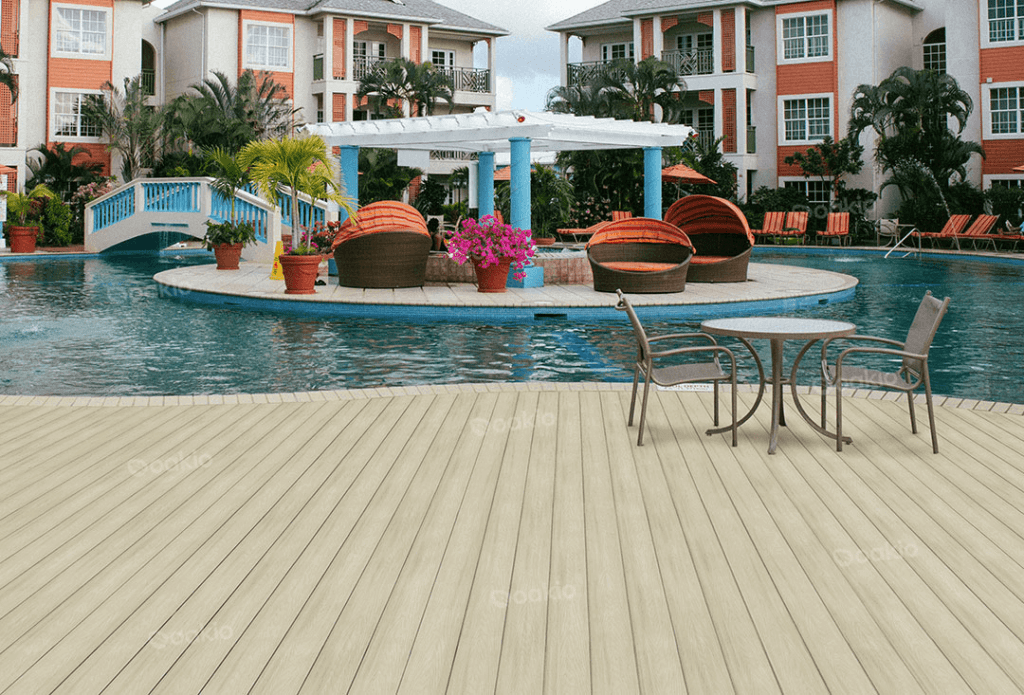
Conclusion
Choosing decks with slip-resistant capabilities will ensure you and the people at home or in the workplace are safe from falls and accidents, so even with kids playing and running around, you know they won’t encounter the unfortunate.
Oakio has been the choice of homes and businesses when it comes to composite decking. Its catalog also features durable and sustainable fencing, cladding, pedestals, lighting boards, screening, and pergolas.
Sign up for the Oakio newsletter for more tips, how-tos, and exclusive deals and discounts. Before you make your composite decking purchase, you might want to Oakio’s Product Visualizer to see how the deck will look in your space.
Trending Reading
What Are the Differences Between the WPC Board and PVC Board?
[2024 Update] How Long Does WPC Decking Last?
